A detailed guide on installing Kali Linux on VirtualBox
A lot of the users would like to do crazy stuffs with their Kali Linux. If you’re doing something you’re not sure, you want to install unknown packages, modify some code but don’t want to break your HOST OS, running and installing Kali Linux on VirtualBox is the best way to go. You could also try using VMware but as VMware is proprietary and VirtualBox is free to use, there’s no argument which way usual users would go. Running Kali Linux on VirtualBox is great as in that way all you need to do is take a snapshot and if you break sometime, you can quickly roll back. This imposes another problem though. If you keep breaking things and keep rolling back for everything, you don’t really learn the Operating System itself. You are learning to bypass and overlook a problem with a easy way out. I am going to judge that? Maybe not. Linux can be quite complicated sometimes specially you never used it before. You might have just heard about Kali Linux from a friend and learned how much it can achieve and wanted to give it a try without actually installing it in your hard disk alongside your primary OS (may that be Windows or Linux or MAC).
Pros of running Kali Linux on VirtualBox
-
- You can run more than one OS simultaneously.
- You can install/re-install/backup/move/restore/rollback your guest OS easily.
- You can manage allocation of resource (Memory, Hard disk). Resource Management!
- You can copy your VirualBox to a different machine. Portability!
- You can completely break your installation and roll back in few clicks.
- You’re forced to troubleshoot and thus learn.
- Great for learning and testing.
Cons of running Kali Linux on VirtualBox
- Performance drop. Usually much slower.
- GPU Acceleration doesn’t work.
- USB Wireless cards can be problematic.
- You tend to avoid learning troubleshooting and just rollback quite often.
- You won’t be comfortable installing and running in real machine if you’re too used to VM’s.
- Can’t use FULL graphics as the card is Virtualized.
- Adds an additional layer between OS and actual hardware.
Saying all that, it’s true for any Virtualized environment. If you’re learning, testing.. yes go ahead. Even best one uses VM’s to test cause it’s just too much time consuming to install and re-install and update.
Note: You may want to check the updated post as well to install Kali Linux on Virtualbox, those posts are slightly newer and recommended. I’ve listed those guides below:
What is VirtualBox
VirtualBox is a general-purpose full virtualizer for x86 hardware, targeted at server, desktop and embedded use. It is a powerful x86 and AMD64/Intel64 virtualization product for enterprise as well as home use. Not only is VirtualBox an extremely feature rich, high performance product for enterprise customers, it is also the only professional solution that is freely available as Open Source Software under the terms of the GNU General Public License (GPL) v2. Presently, VirtualBox runs on Windows, Linux, Macintosh, and Solaris hosts and supports a large number of guest operating systems including but not limited to Windows (NT 4.0, 2000, XP, Server 2003, Vista, Windows 7, Windows 8), DOS/Windows 3.x, Linux (2.4, 2.6 and 3.x), Solaris and OpenSolaris, OS/2, and OpenBSD.
VirtualBox is being actively developed with frequent releases and has an ever growing list of features, supported guest operating systems and platforms it runs on. VirtualBox is a community effort backed by a dedicated company: everyone is encouraged to contribute while Oracle ensures the product always meets professional quality criteria.
Things you need to install
As I am going to show this in Windows here’s the link to Windows installer. You can download MAC or Linux installer and follow EXACTLY the same steps to install and run VirtualBox in your machine.
- VirtualBox 4.3.10 for Windows hosts x86/amd64
- VirtualBox 4.3.10 Oracle VM VirtualBox Extension Pack for All supported platforms
Extension pack provides the following added functionality:
- The virtual USB 2.0 (EHCI) device;
- VirtualBox Remote Desktop Protocol (VRDP) support;
- Host webcam passthrough;
- Intel PXE boot ROM and
- Experimental support for PCI passthrough on Linux hosts.
If you need instructions on how to install VirtualBox in your machines (may that be a Windows, Linux or MAC or Abracadabra, refer to their User Manual. VirtualBox user Manual is VERY detailed and specific installation instruction can be found here.
Download page: https://www.virtualbox.org/wiki/Downloads
Kali Linux
I mean if you don’t know what Kali Linux is, you wont be here!! Right? Anyhow, Kali is the Hindu goddess associated with empowerment! I’m just kidding. Kali Linux is a Debian-derived Linux distribution designed for digital forensics and penetration testing. It is maintained and funded by Offensive Security Ltd. It was developed by Mati Aharoni and Devon Kearns of Offensive Security through the rewriting BackTrack, their previous forensics Linux distribution. Say hi to Mati and Kali Dev team at www.kali.org.
You need to download the latest version of Kali Linux ISO from here.
You can also download from CDImage Page here:
I would personally suggest downloading using TORRENT and it seems more stable and less chance of data corruption.
In this guide I will outline very detailed step by step instructions on installing Kali Linux on VirtualBox where Windows 7 is the HOST operating system.
Installing Kali Linux on VirtualBox
In this guide, I will cover the followings:
- Create a new Virtual Machine
- Create a new Virtual disk (VDI, dynamic allocation etc.)
- Modifying some VirtualBox settings (allocating physical and Video memory, selecting OS Type, CPU acceleration etc.)
- Loading Kali ISO
- Booting Kali ISO (initial info, location, timezone etc.)
- Kali disk partitioning (you should try other ways than I’ve showed here to learn)
- Finalizing instllation and running Kali on VirtualBox.
- Install Virtualbox Guest Additions packages
You have two options here to follow this guide,
- You can just use the slideshow in this page and pretty much follow that..
- You can read this really long informative guide to get a better understanding of what to do
So choice is yours. Go to next page as if you want to follow all the steps. It’s a pretty long guide, so had to break it into two pages.
Discover more from blackMORE Ops
Subscribe to get the latest posts sent to your email.

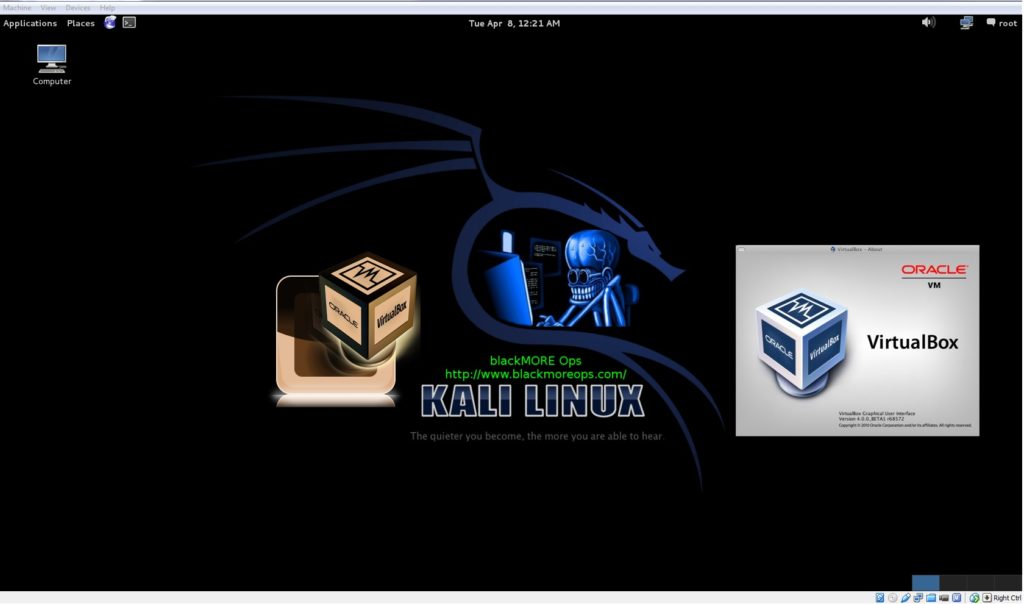
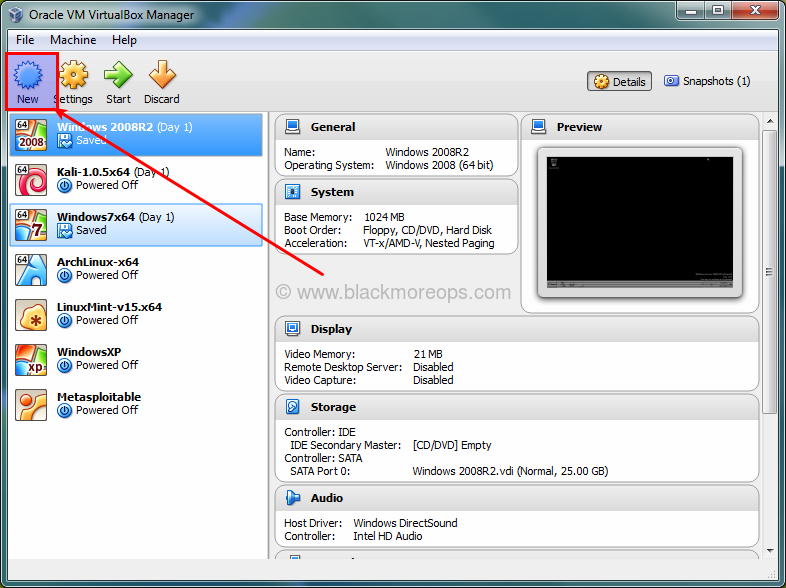
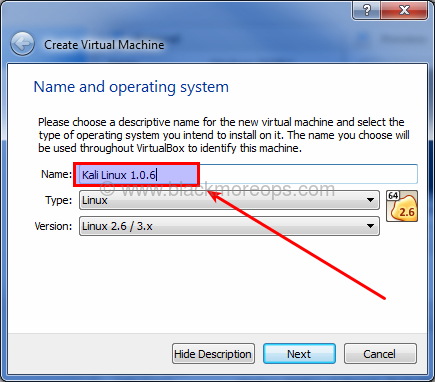
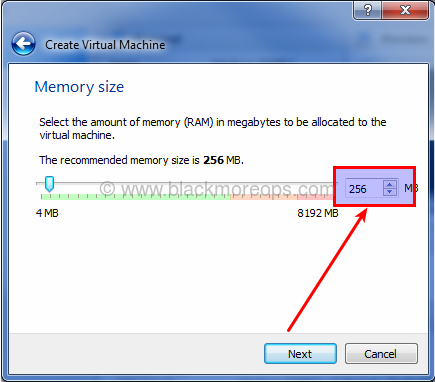
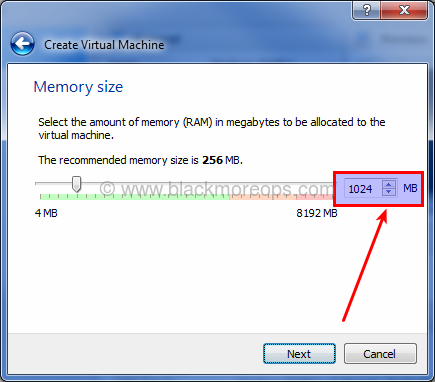
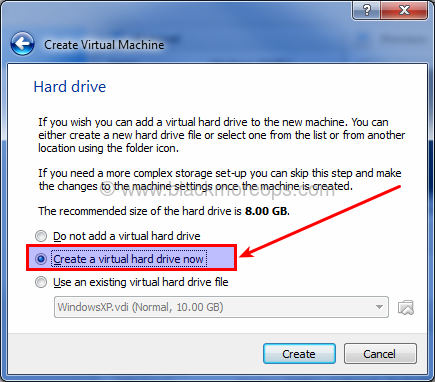
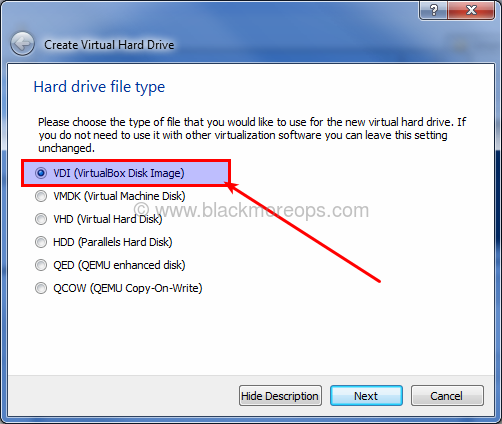
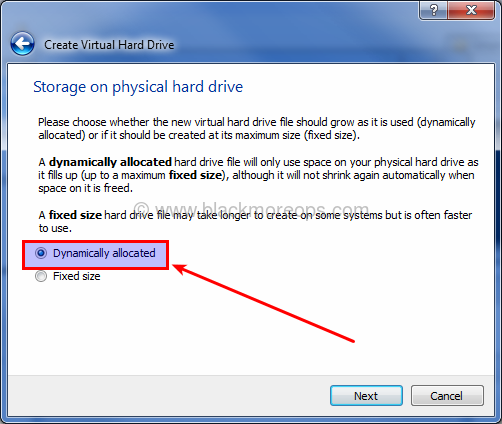
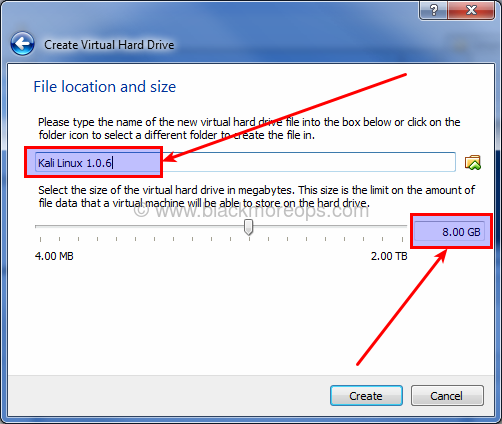
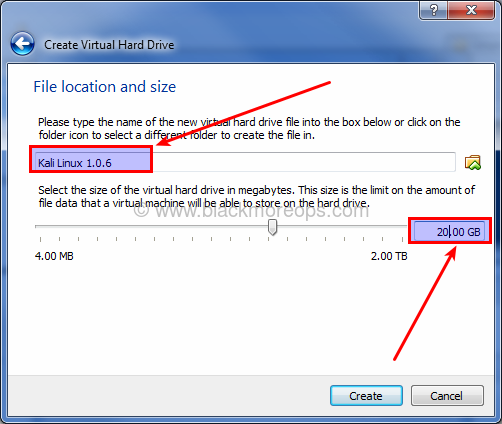
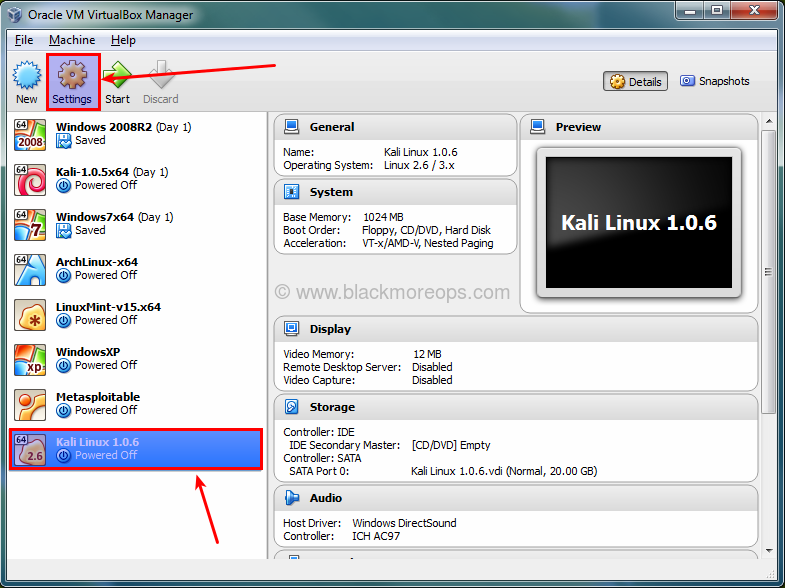
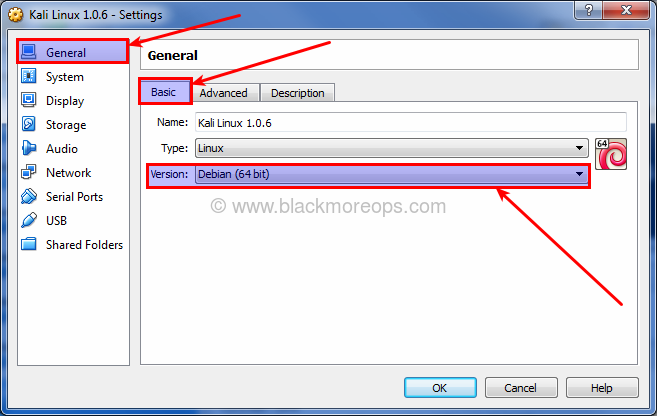
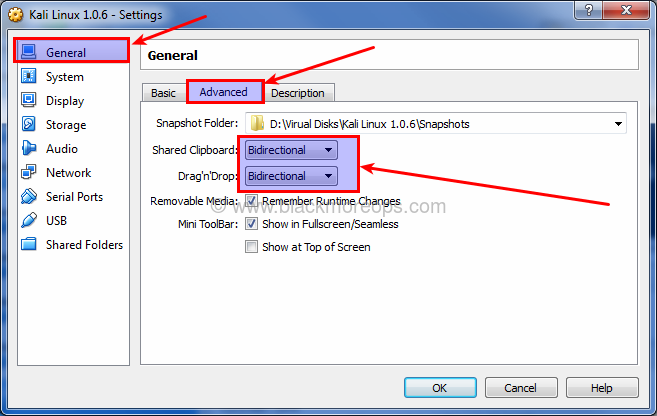
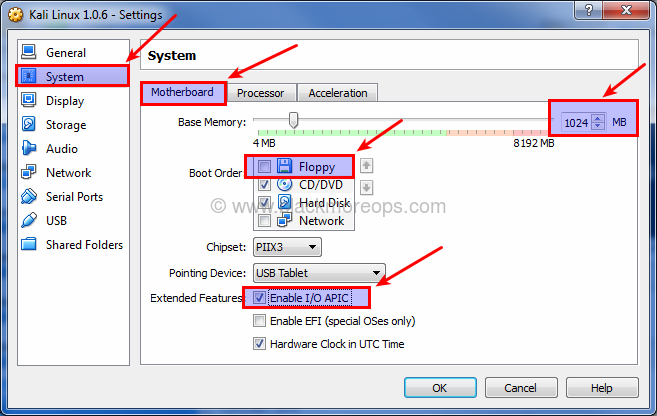
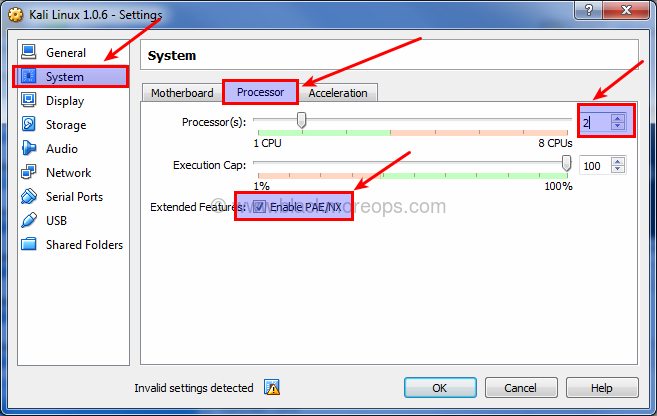
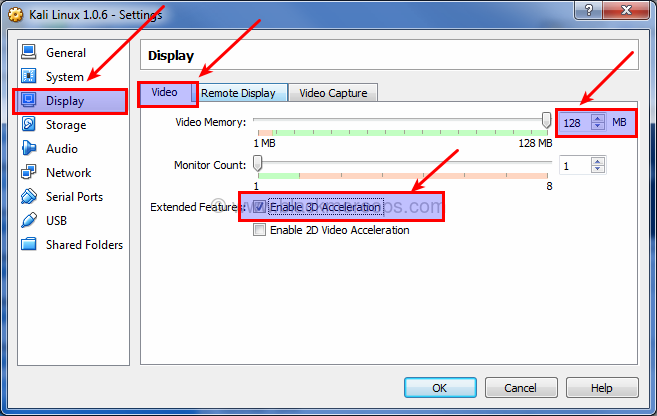
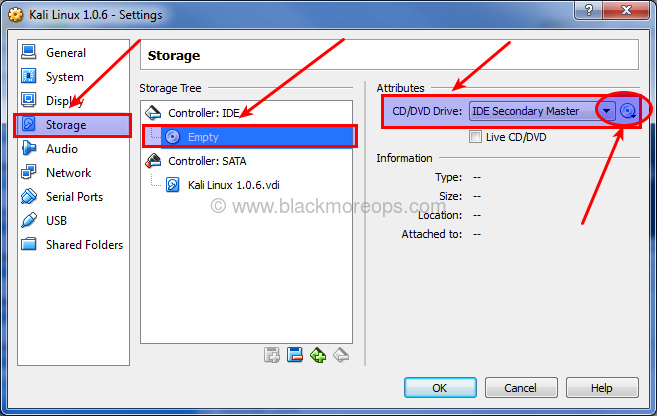
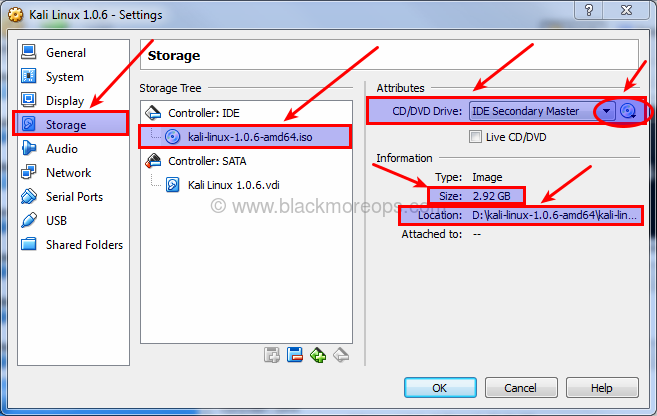
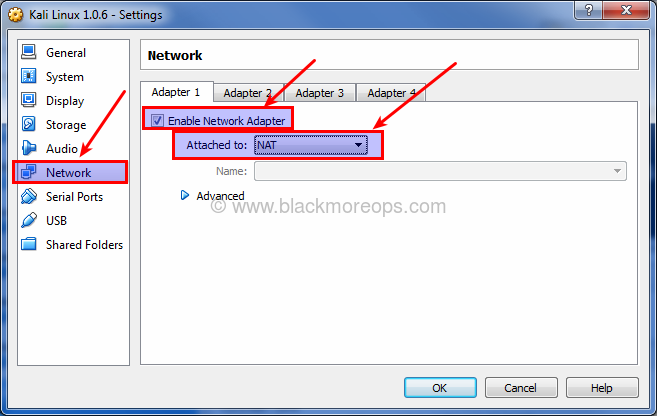
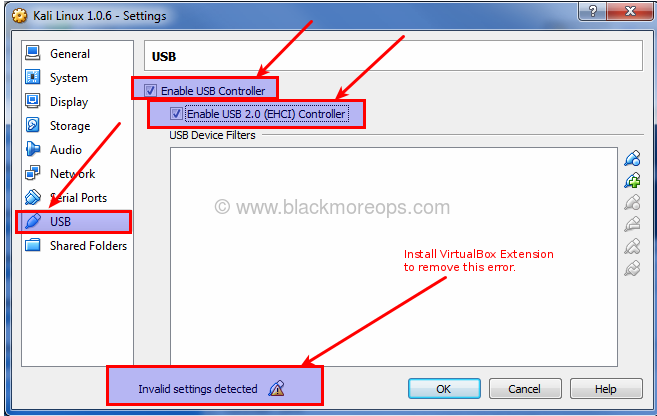
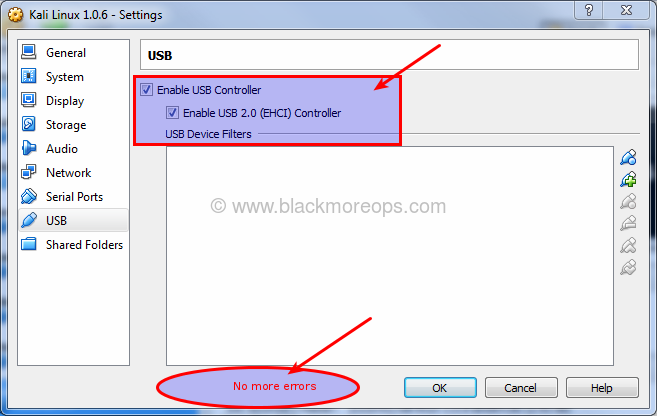
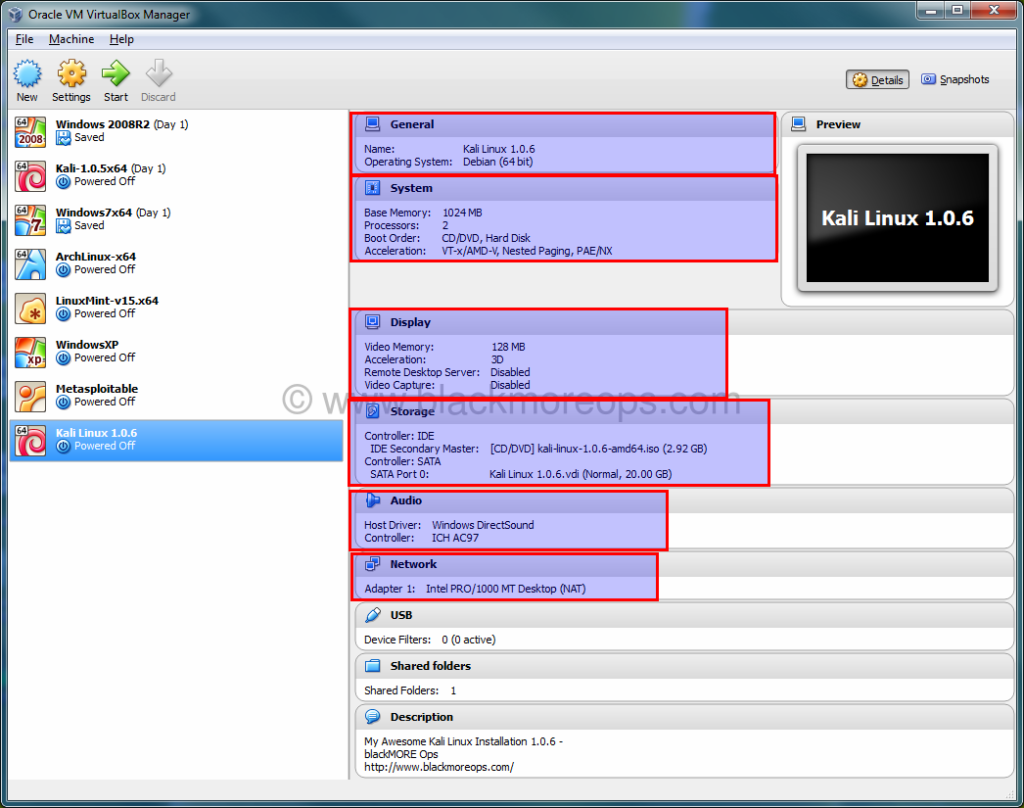
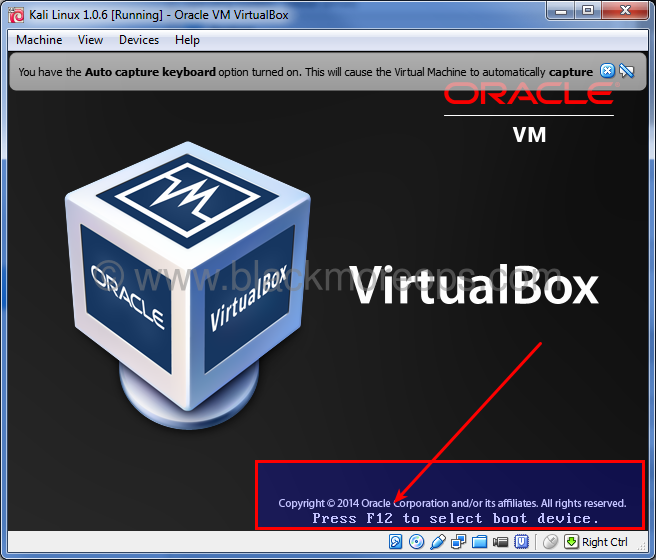
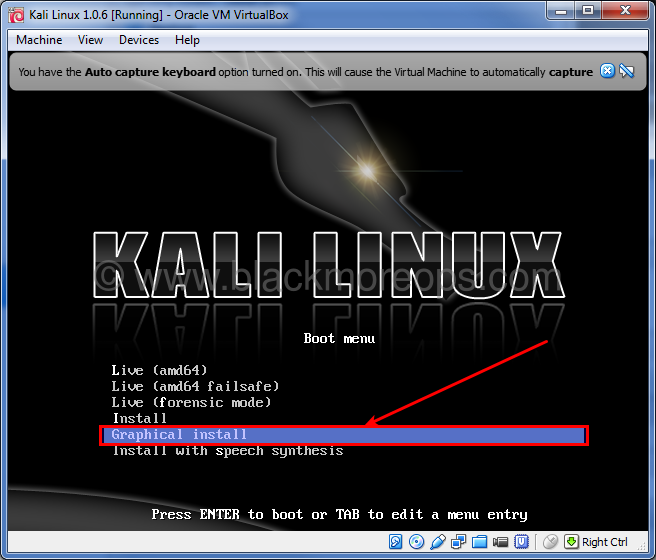
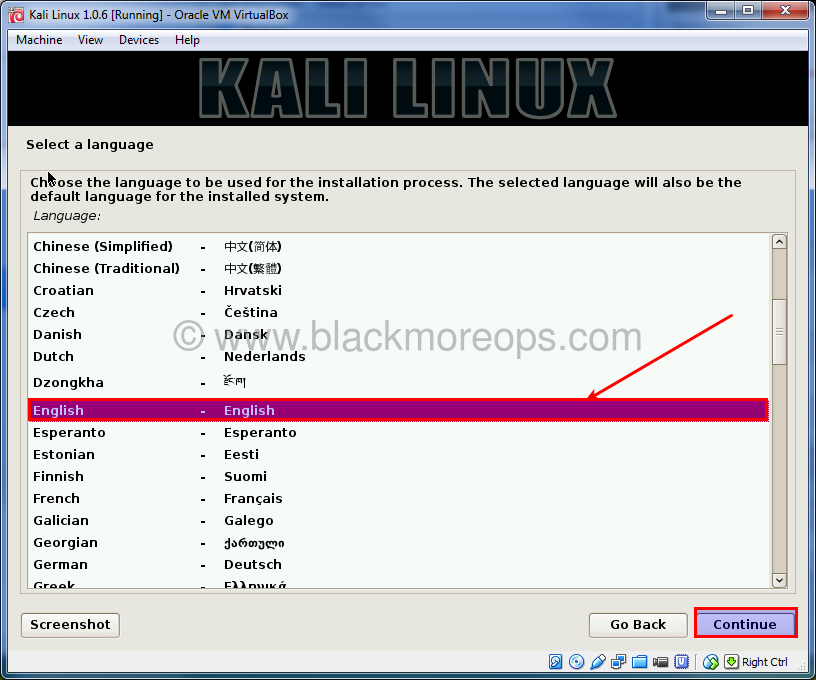
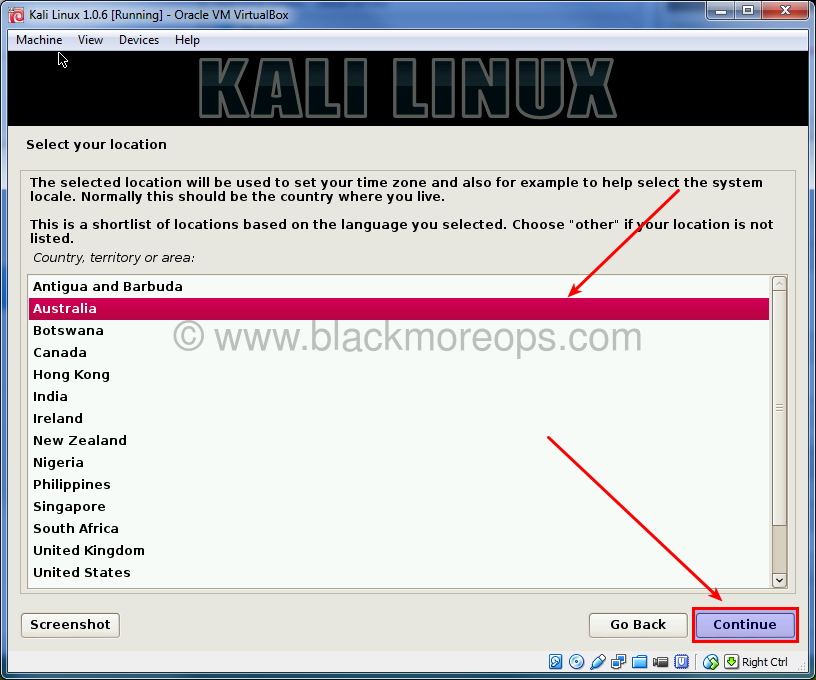
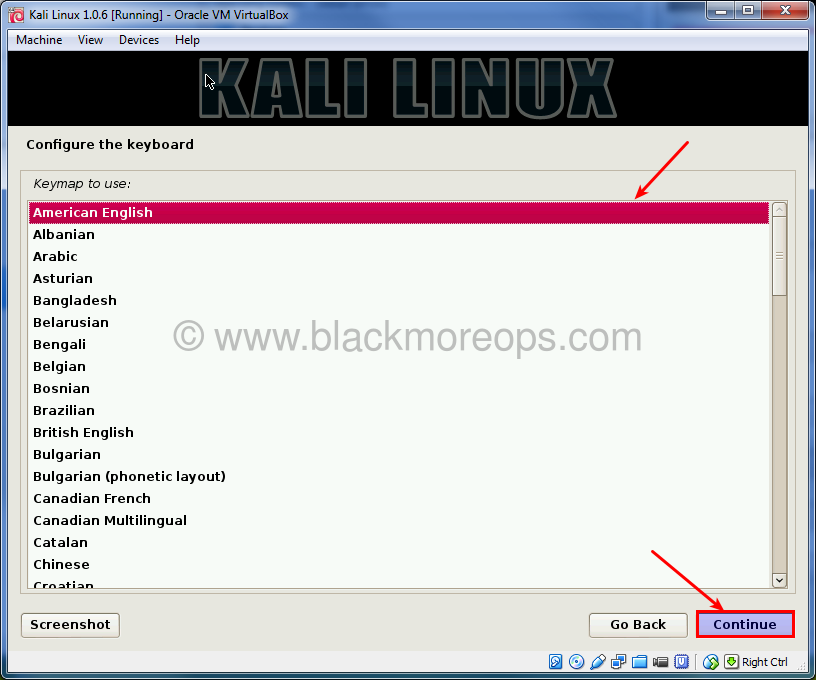
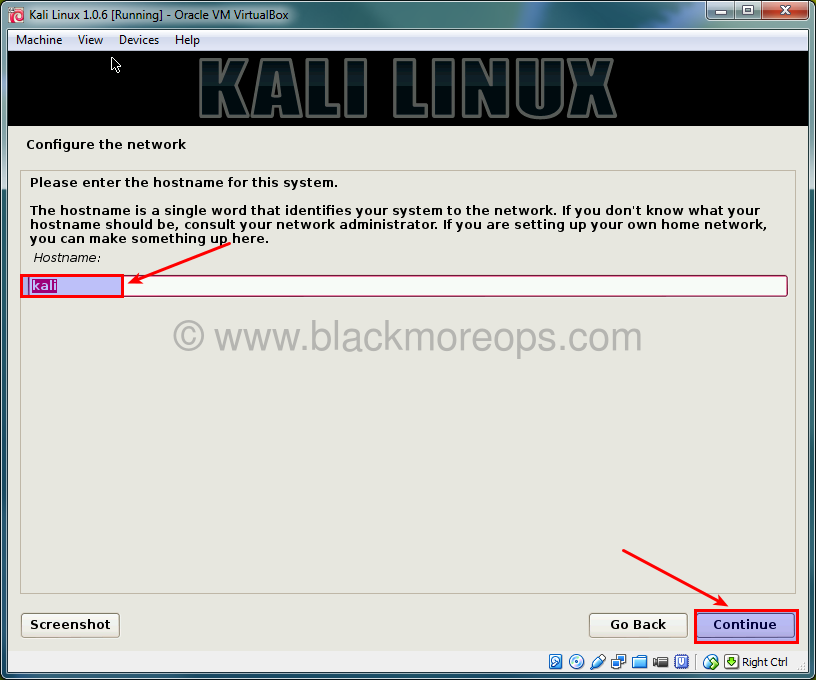
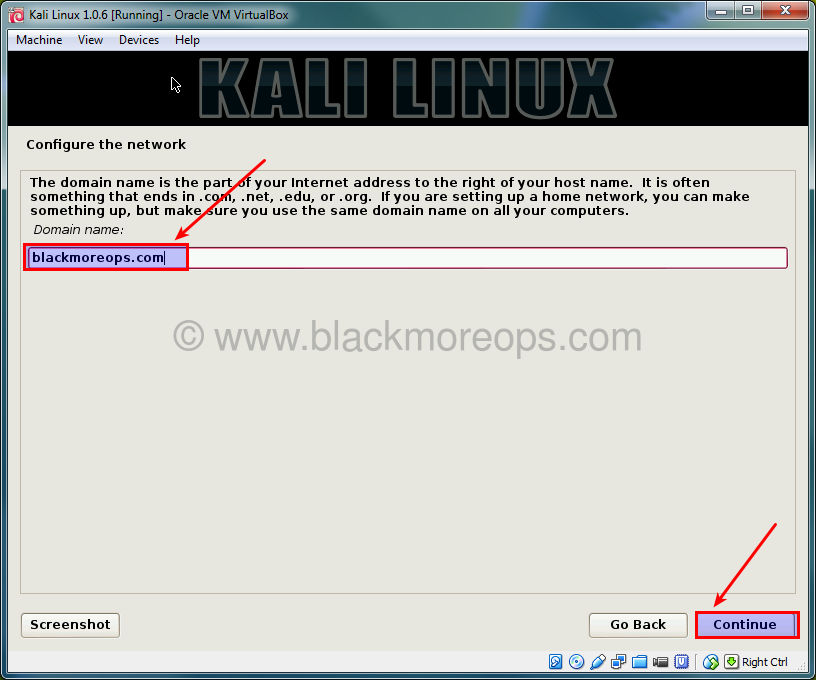
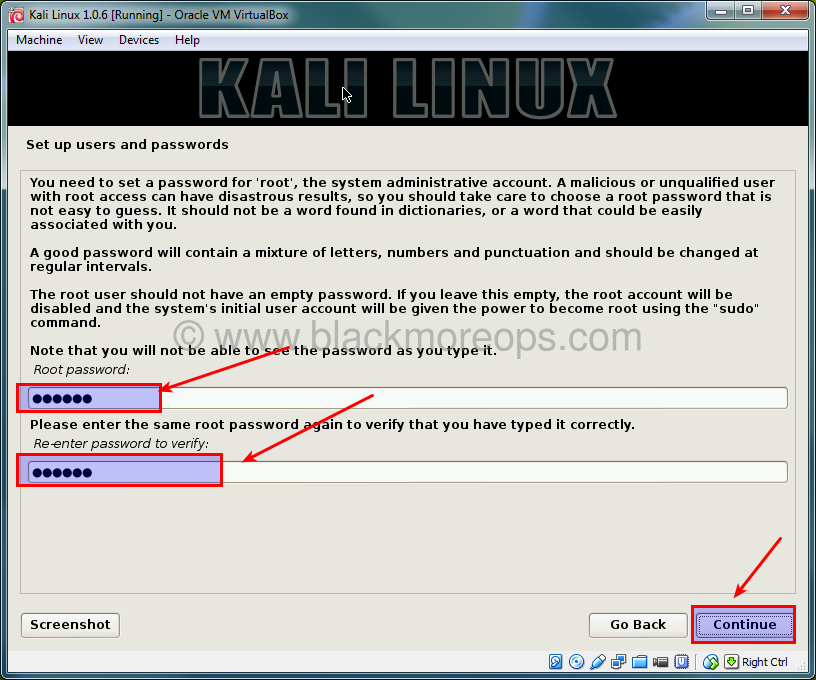
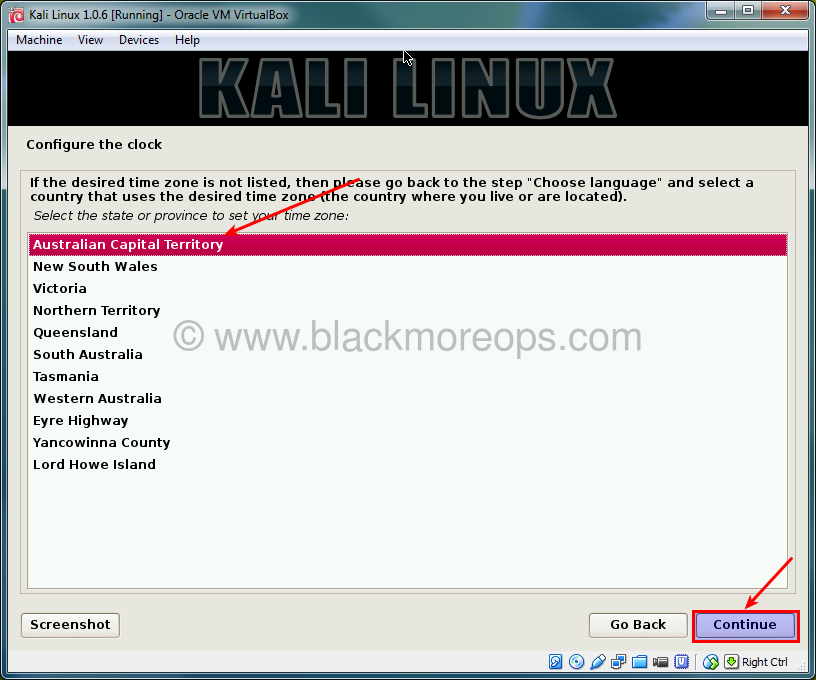
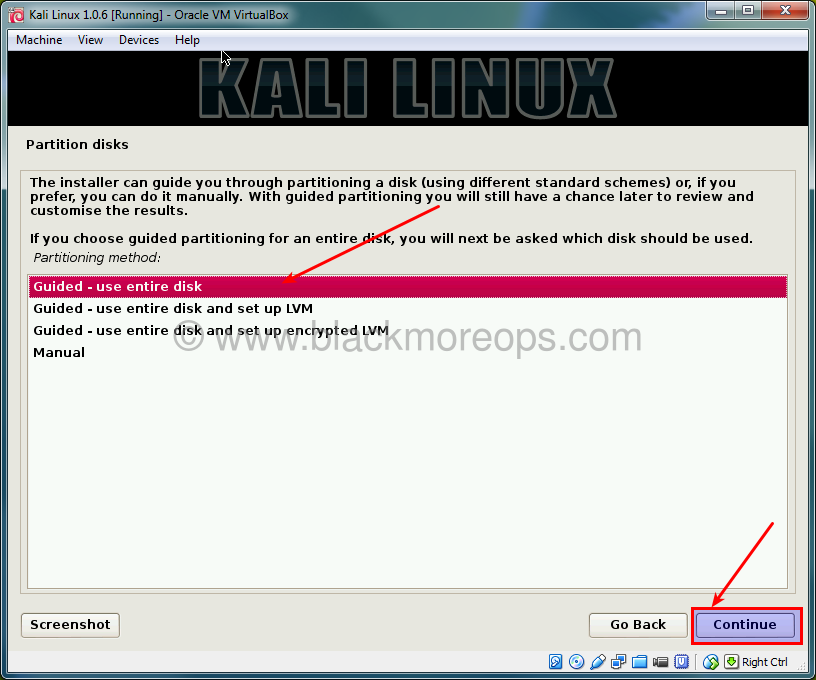
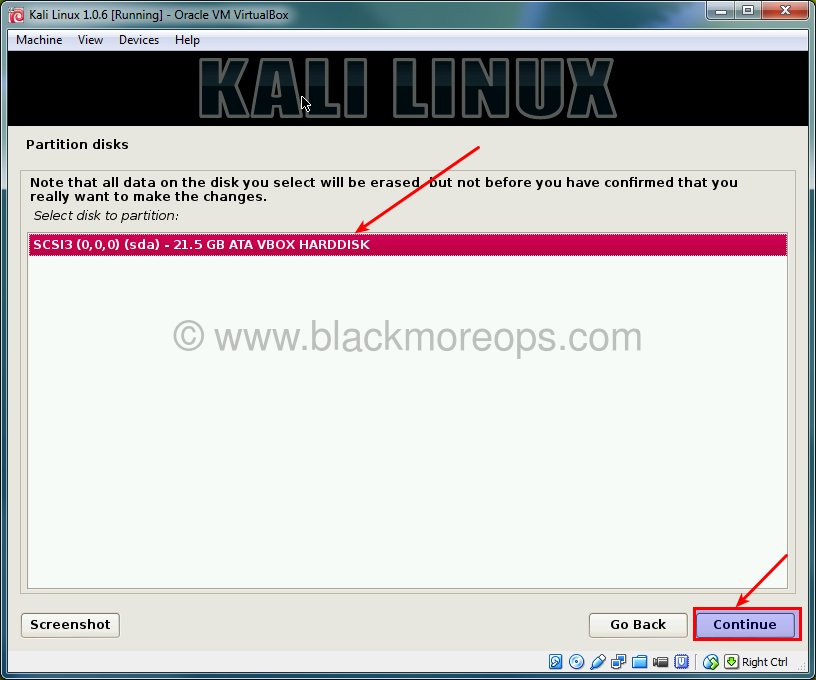
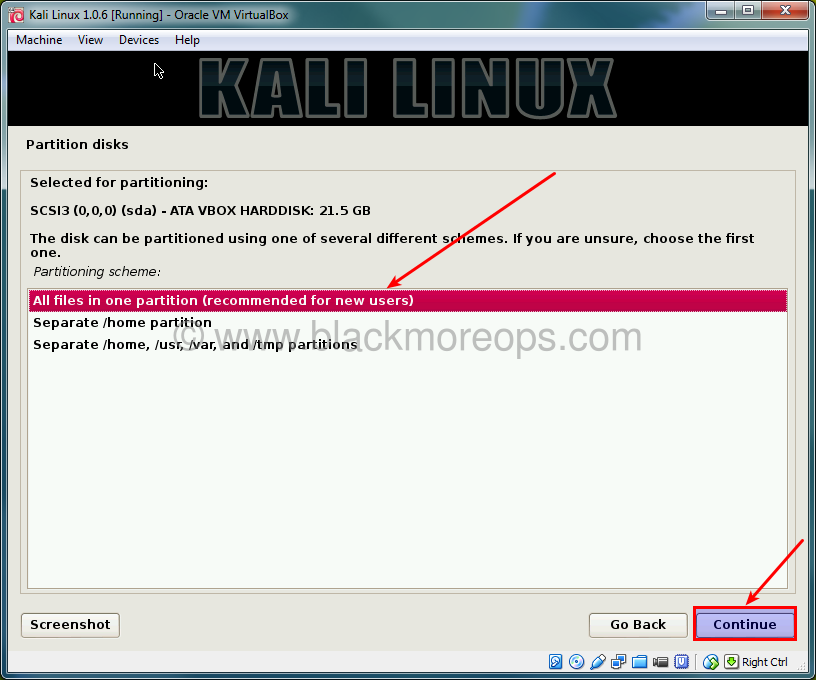
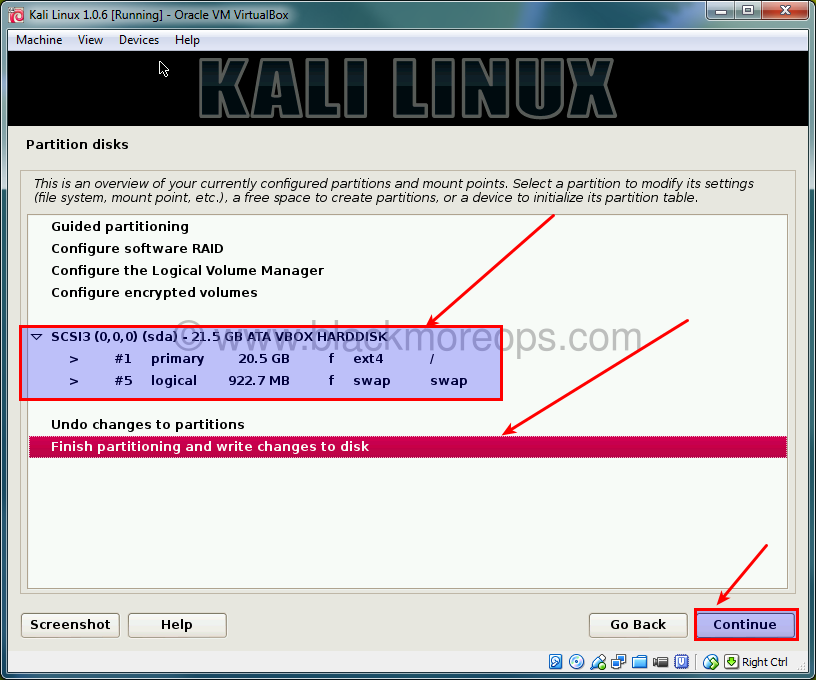
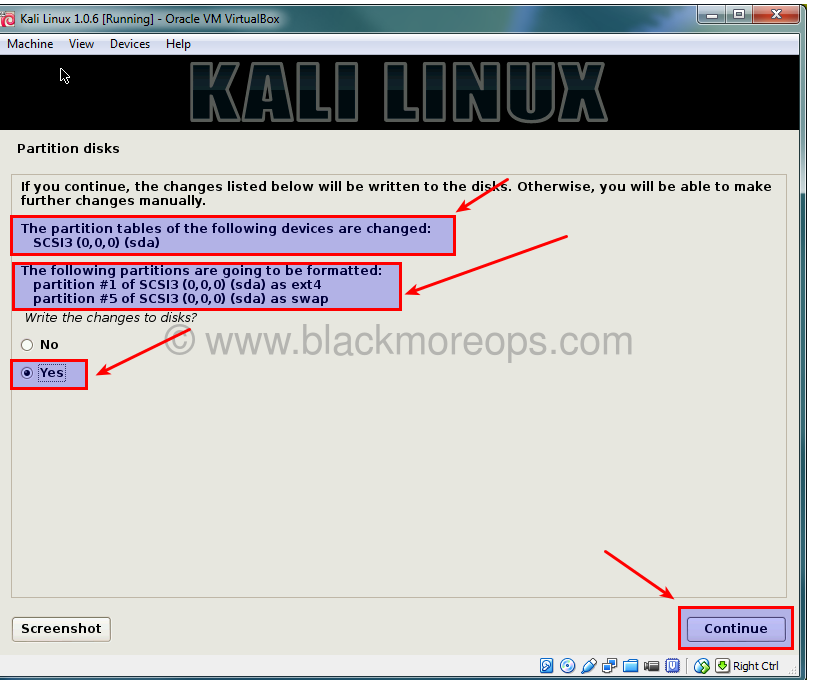
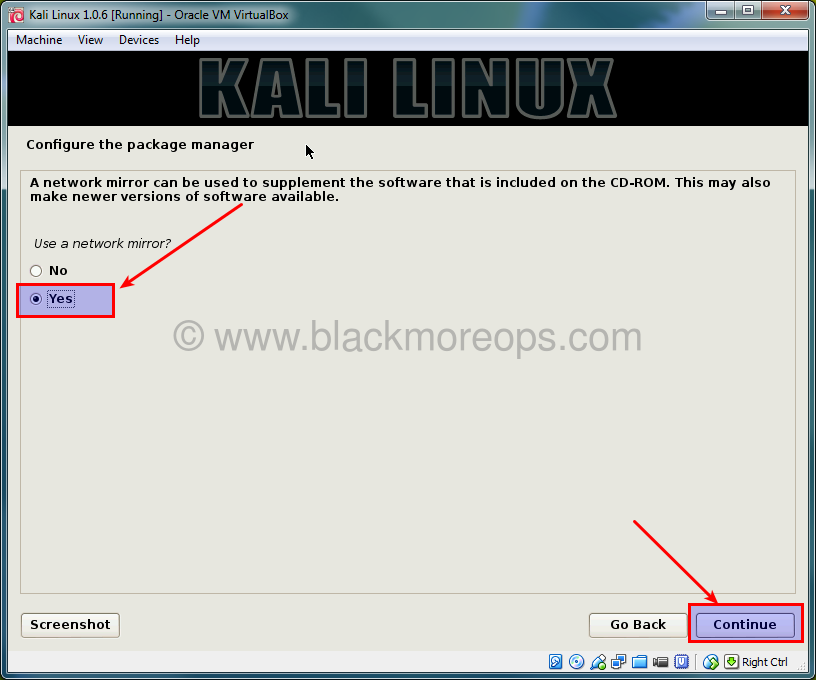
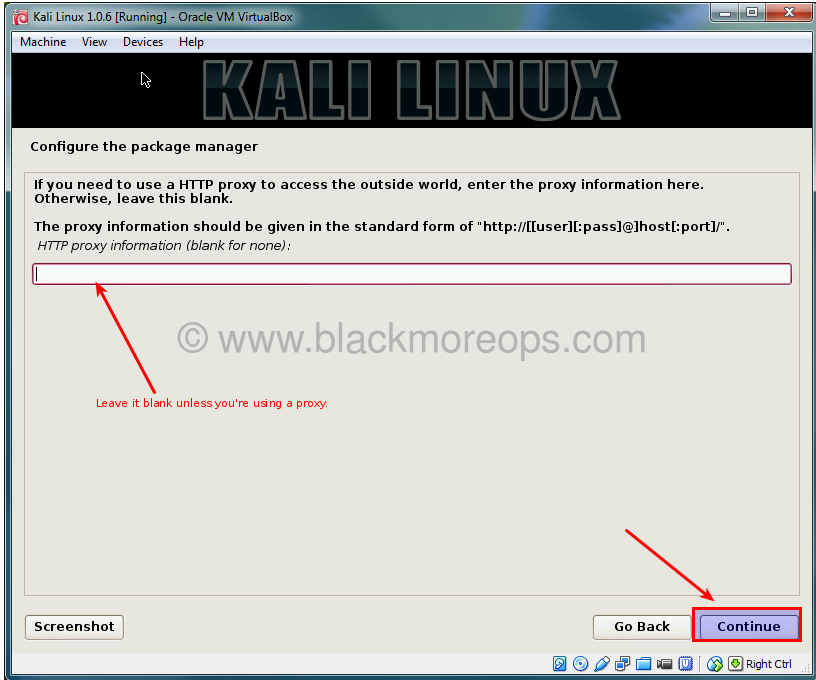
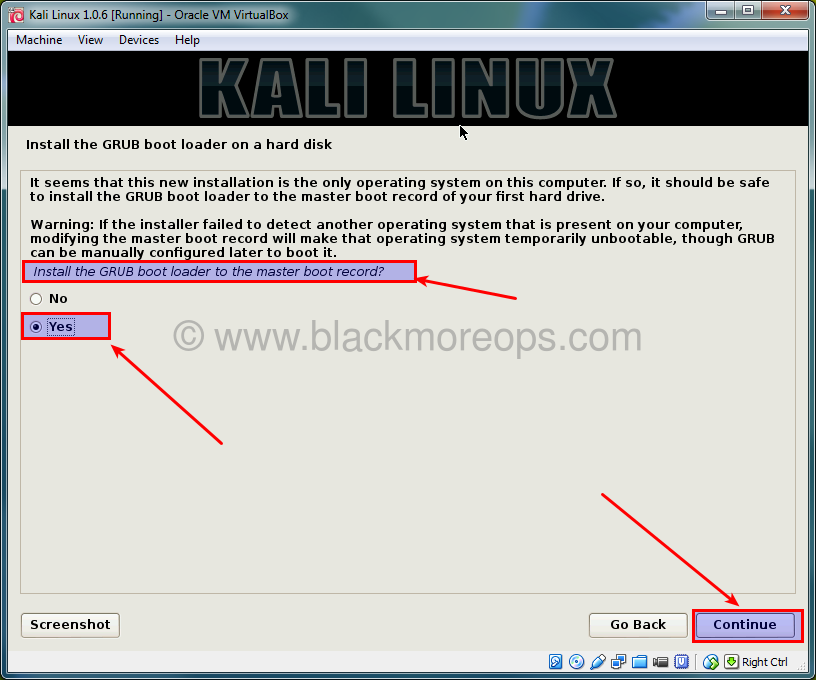
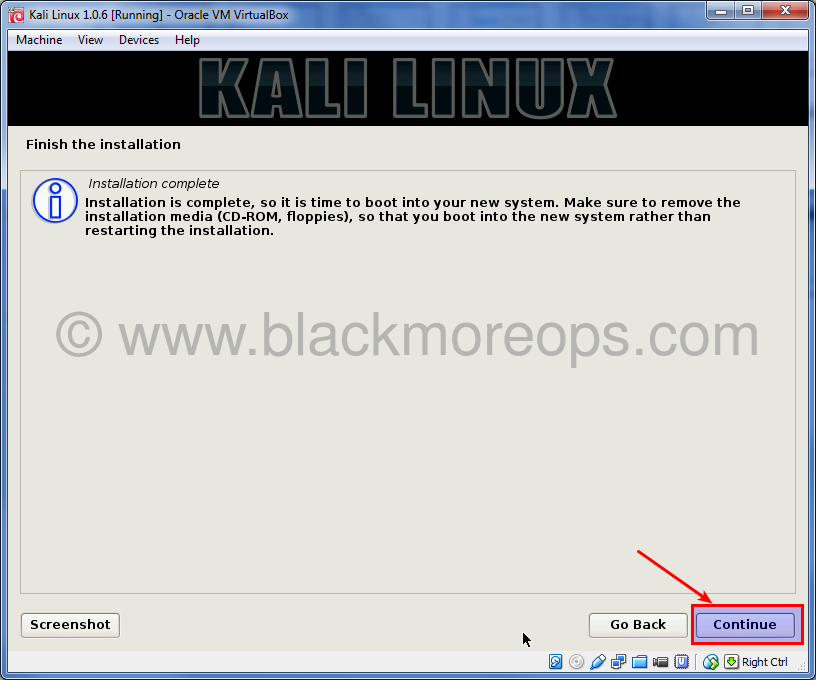
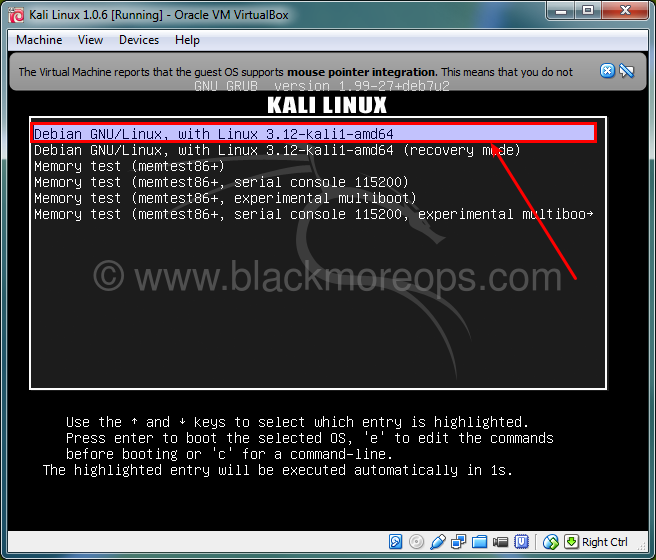
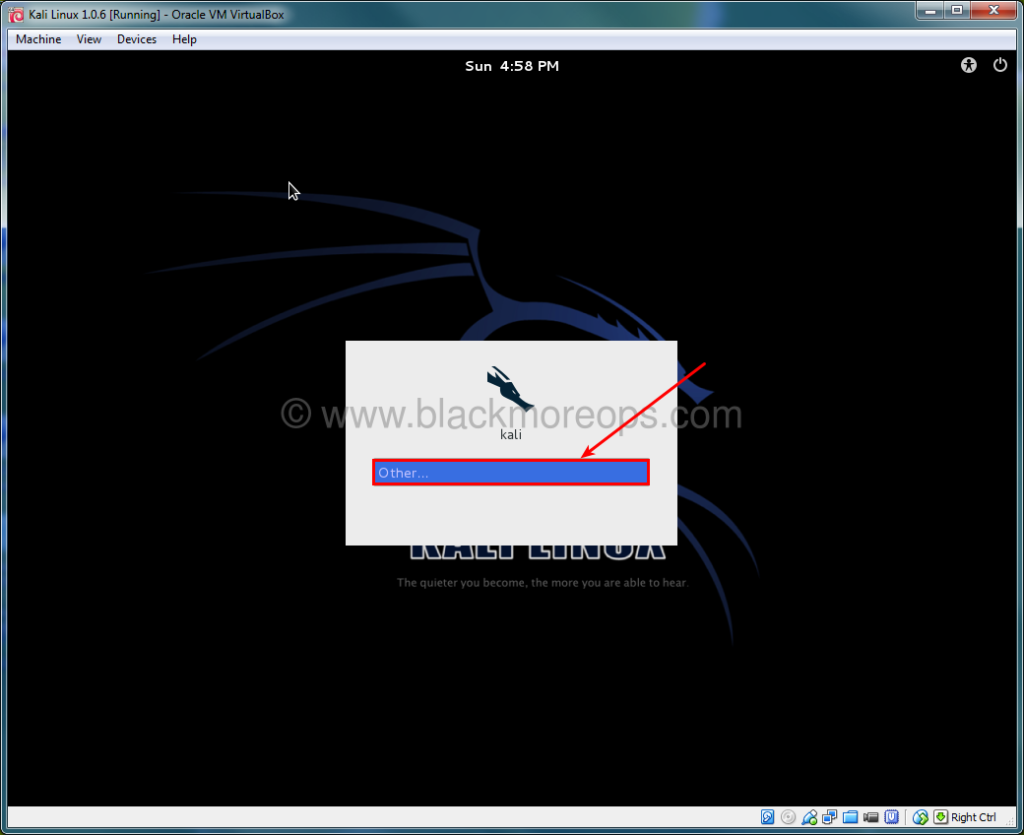
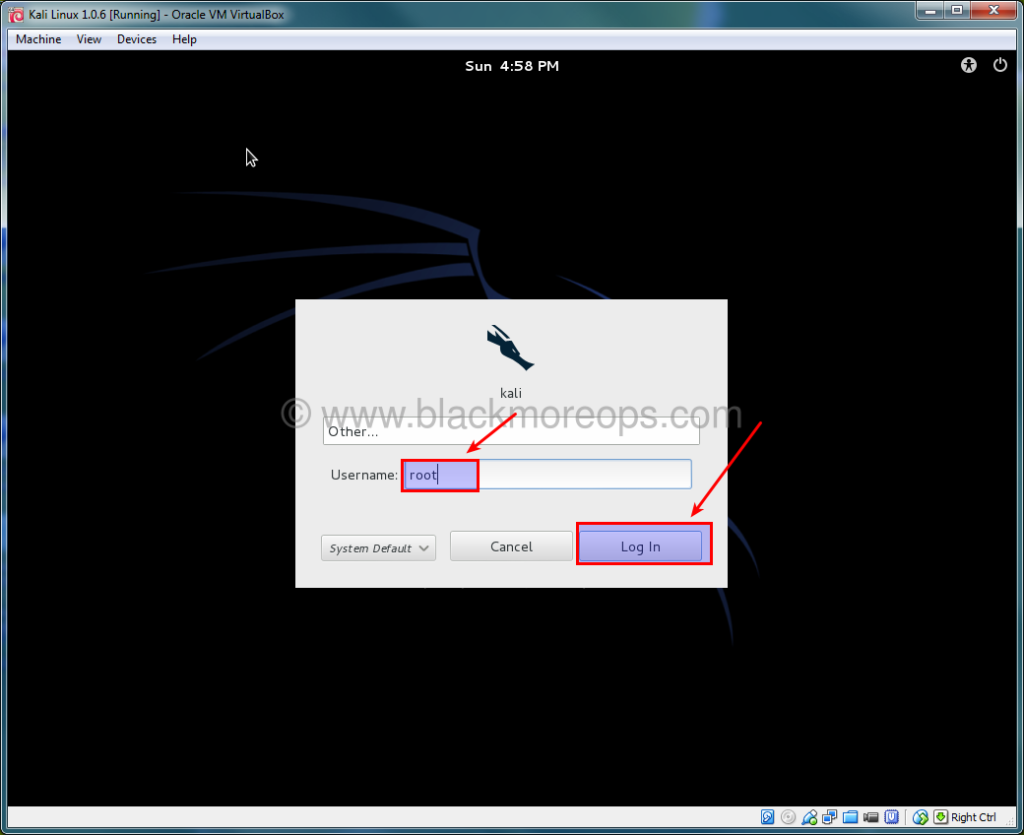
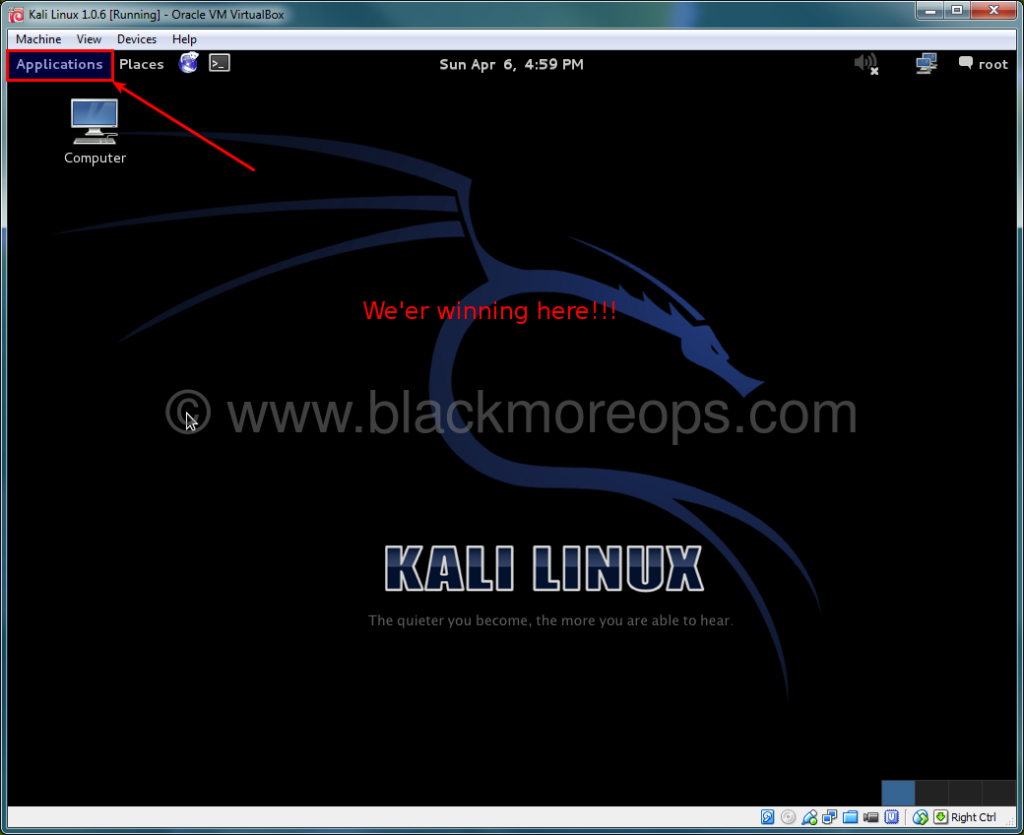
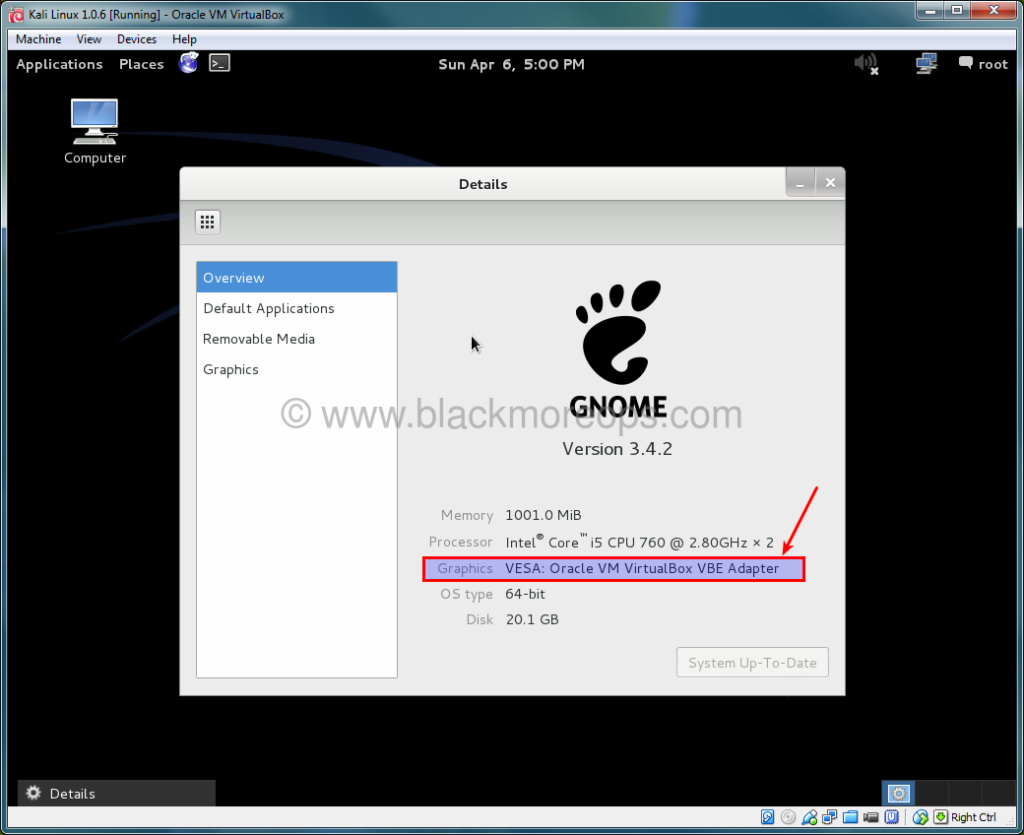
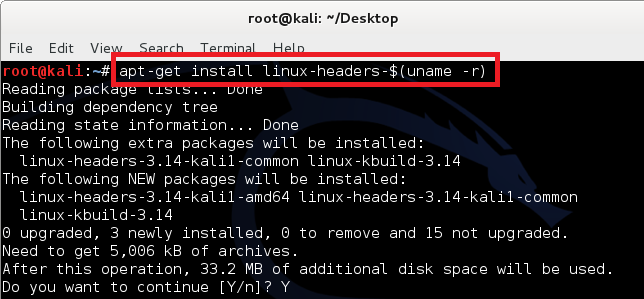
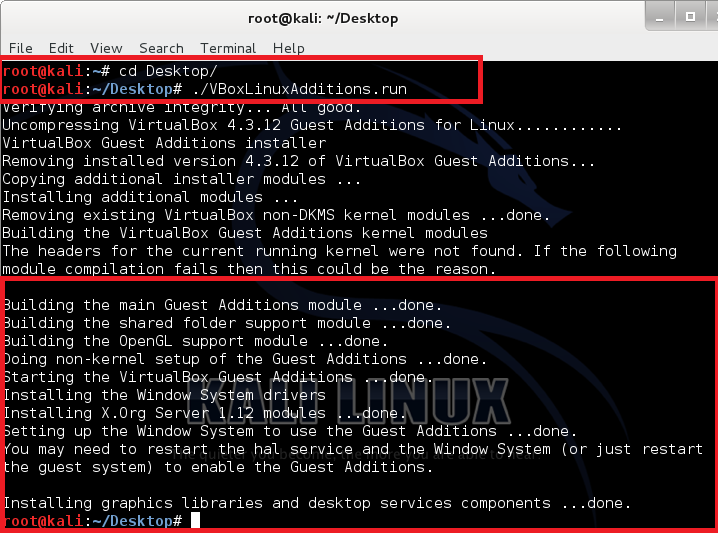
223 comments
I used this tutorial, after all the steps done right and starting first time black screen only. What to do? Thanks in advance.
Obrigada! Depois de tantos posters de busca atrás de resolver meu problema, encontrei o seu e meu problema foi resolvido! Parabéns! Excelente post!
On Kali Linux Boot menu, I highlighted Graphical install option and pressed Enter.
Now all I see is black screen :/ :( Need help
same happened to me. i went back to settings>display, unchecked “enable 3d acceleration” and it worked fine.
Respect Sir…………..
Great work….
May u live long…………..
Ameeen………….
I keep getting this error every time i try and install the extension pack :( I’m on windows 64bit… “Failed to load the main module (‘C:\Program Files\Oracle\VirtualBox\ExtensionPacks\Oracle_VM_VirtualBox_Extension_Pack\win.amd64\VBoxPuelMain.DLL’): VERR_SYMBOL_NOT_FOUND – GetLastError=127.”
problem fixed! use this link to get the latest extension pack.
https://download.virtualbox.org/virtualbox/5.1.14/Oracle_VM_VirtualBox_Extension_Pack-5.1.14-112924.vbox-extpack
I have tried a couple of times to do this but every time I get to the password to finally log in it says, “Sorry, that didn’t work. Please try again”. I have kept the name and password simple but no luck. Any suggestions?
Heya, I’m trying to install kali, and the last few attempts I’ve been getting stuck on ‘Configure the package manager’ could anybody help me get past this?
same here T_T
Thank you for this info instruction. Ive been following this instruction carefully up to this point . im running into a problem , a slight one . when I run “Graphic installation” in selected menu, I get this message in terminal , ” Mount: mounting /dev/sda on /media failed : invalidate arrangement
Unmount: can’t unmount/ media: invalied argument. it proceeded on to next page to Selected Language. My question is, should I worried about this? will this end up crapping out larer in the future?, if so, how should i fix this. thanks.
i am not able to login to my recently installed kali account in virtual box………what should i do??
plzzz HELP!!!!!!
BEST! THANK YOU SO MUCH.
I’ve been looking for this for days XD
very detailed guide.
AWESOME WORK! :D
after installation of it it dosnt show anything just a black screen
After enter on graphical installation a black shows up then nothing only black screen I just did step by step but nothing shows up plz help
Once i have selected “Graphical Install” i just get a blank black screen, and seems to be doing nothing from that point, any ideas please? Thanks in advance.
when i click on install button it shows
” This kernal requires the following features not present on the cpu:
unable to boot- please use a kernal appropriate for your cpu.”
what should i do now sir plz tell me?
i did the install an went to reset then i restarted it, some startup comands ran up the screen and the it went to the black screen with the “-” in the top left corner and wont go anywhere
read the comments and no answers pls help
hey there’s tons of messages here but I just have to say THANK YOU, u’re the best !!
thanks alot for this detailed info really helpful! thumps up!
Black screen with “-“…. Please help
Great guide that still holds up :) Thanks for this!!
Great guide, smooth sailing the whole way through with no problems. Thanks